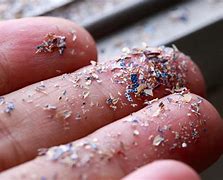EMF Protection: Increasingly, Microplastics Found in Human Brain, Nose and Blood; Solution or Lawsuit?
The Unsettling Find of Microplastics in the Brain
We also found microplastics in human brain tissue, a disturbing confirmation of previous reports. These particles just showed up in the nasal cavity, right by the brain stem, leading to fears about the "plastic breaking through the blood-brain barrier." Your brain is protected by a barrier that prevents most harmful substances from entering it called the blood-brain barrier. If microplastics are able to pass the brain barrier, they could interact with the cellular systems of neurons and other supporting neural cells; therefore, in case of prolonged exposure, these effects on degradative systems may sum up, leading to an increased risk for neurodegenerative diseases like Alzheimer or Parkinson.
Earlier Findings: Microplastics Detected in Human Heart and Blood
The finding comes after earlier research showed microplastics in human bloodstreams and heart tissue. During surgery, particles were discovered in the heart, suggesting that microplastics can enter the most guarded recesses of human physiology. Once microplastics are in the blood, they could travel around the body and might lead to inflammation, suppress immune response or even clotting.
The presence of these particles in several organ systems reflects the magnitude at which microplastic exposure has become an issue of public health.
How do the human body ingest microplastics?
Microplastics are everywhere. These particles are intruding our bodies from the food we eat to the air we breathe. Microplastics are ingested or inhaled by people through various methods.
Seafood ie shellfish and fish which accumulate microplastics in polluted oceans.
Studies have found high quantities of microplastics in bottled water, probably from packaging.
Sea salt: It kept this reference so when you would such information it will refer back to your first checkpoint which is sea salt then refine your search accordingly
Airborne microplastics — Inhaled, especially in urban areas with severe pollution.
The Impact on Human Health
Adding to the mounting fear: scientists do not yet know the full toll that micro and nanoplastics take on our organs and systems in the long-run. The idea that microplastics could be gumming up the works in organs, hearts and brains is worrying not just to Mother Earth, but to humans as well — some science types are concerned with cognitive impairment in cases where they find microplastic has made it into a brain; others worry about how they might mess with hormones and still others shudder at potential heart and lung inflammation.
In addition, it is possible that microbes can collect harmful substances such as heavy metals and chemicals by binding to microplastics, which might in turn increase health risks.
Avoiding the Ugliness of Microplastics
As microplastics are so widespread, it might seem inevitable that individuals will come across them entirely; still here is what people can do to limit their intake:
Opt for tap water instead of bottled water: Tap waters usually contain less microplastics than bottled ones.
Consume less seafood: Eating molluscs in particular, but really all marine life somewhat surprisingly can reduce microplastics ingestion.
Try re-usable containers — help reduce plastic consumption in the kitchen by storing food & drink without using plastic.
Back environmental policies: Speak up for laws aimed at lessening plastic production and pollution.
Conclusion
Infiltration into the human body — from blood to brain the infiltration of plastic particles is an urgent crisis as part of both environmental and health law. Further research is needed, but the existence of these particles in vital organs suggests now is the time to act against plastic pollution and fully uncover its effects on human health. This will help to mitigate their potential adverse effects on the human race as a species, and each of us personally.








0 Comments